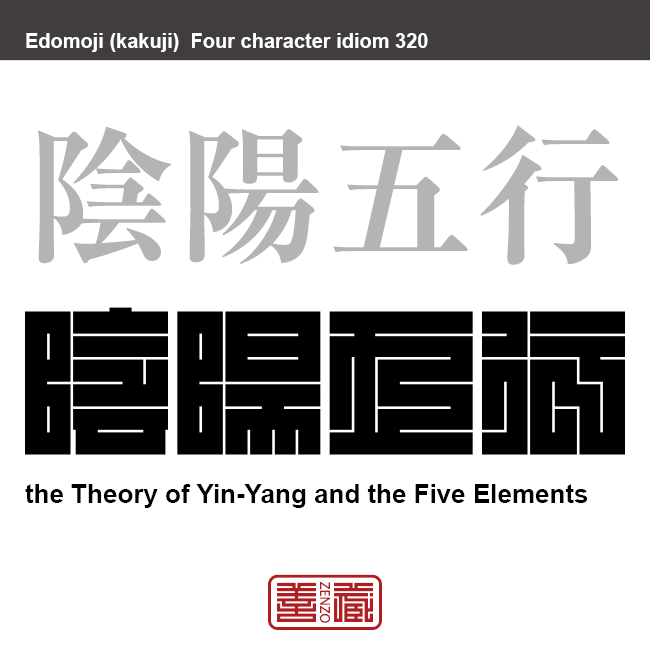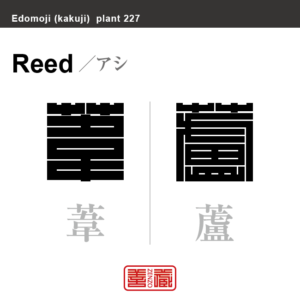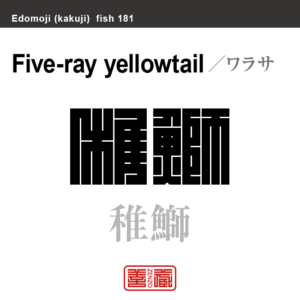陰陽五行 いんようごぎょう 角字でことわざ、四字熟語

陰陽五行
いんようごぎょう
Inyou-Gogyou
The Theory of Yin-Yang and the Five Elements
Unicode: [陰_0x9670][陽_0x967D][五_0x4E94][行_0x884C]
古代中国で生まれた、森羅万象を説明するための自然哲学。二つの陰陽、木火土金水の五行の要素に、この世界の事象全てを割り当てて分類し、相互の理を解明しようとする理論。易や十二支、占術、戦術、医学など東洋思想のほぼ全ての根幹をなす。易経、陰陽五行論などが主なテキスト。
角字とは?
江戸時代に誕生した角字は、正方形のグリッド内にほぼ水平・垂直のラインのみで文字(漢字)が表現されるグラフィックアートです。
正方形という限られた空間の中に、あらゆる文字を閉じ込めようとするグラフィックデザインは、前述した、ミニマムな物に対する日本人特有のこだわりが随所に感じられます。
そのシンプルで有りながら、奥深い「角字」は多くの日本人を魅了し、お祭りで着る半被や印半纏(しるしばんてん)と言われる着物や、商標、印鑑、家紋、看板デザインなどに今日まで数多く使用されてきました。
What is Kakuji?
There is a style of penmanship called “Kakuji” in Japan. Edo-born Kakuji is a graphicart that expresses letters (kanji) with almost horizontal and vertical lines only.
The design which bases on many straight lines seems simple, or too plain even at its first glance; yet this beautiful artistic penmanship that encompasses the aesthetic of the Japanese in the Edo era, also known as “Iki”, and playfulness has long been inherited to this day, thanks to the masteries’ long years of efforts in training and refinement.
Kakuji with its simplicity and depth is used for designs such as trademark, hanko stamp, family crest and signboard.































































 2文字コード:MZ 3文字コード:MOZ 数字:508 ITU:258 ccTLD:.mz
2文字コード:MZ 3文字コード:MOZ 数字:508 ITU:258 ccTLD:.mz







































































































































